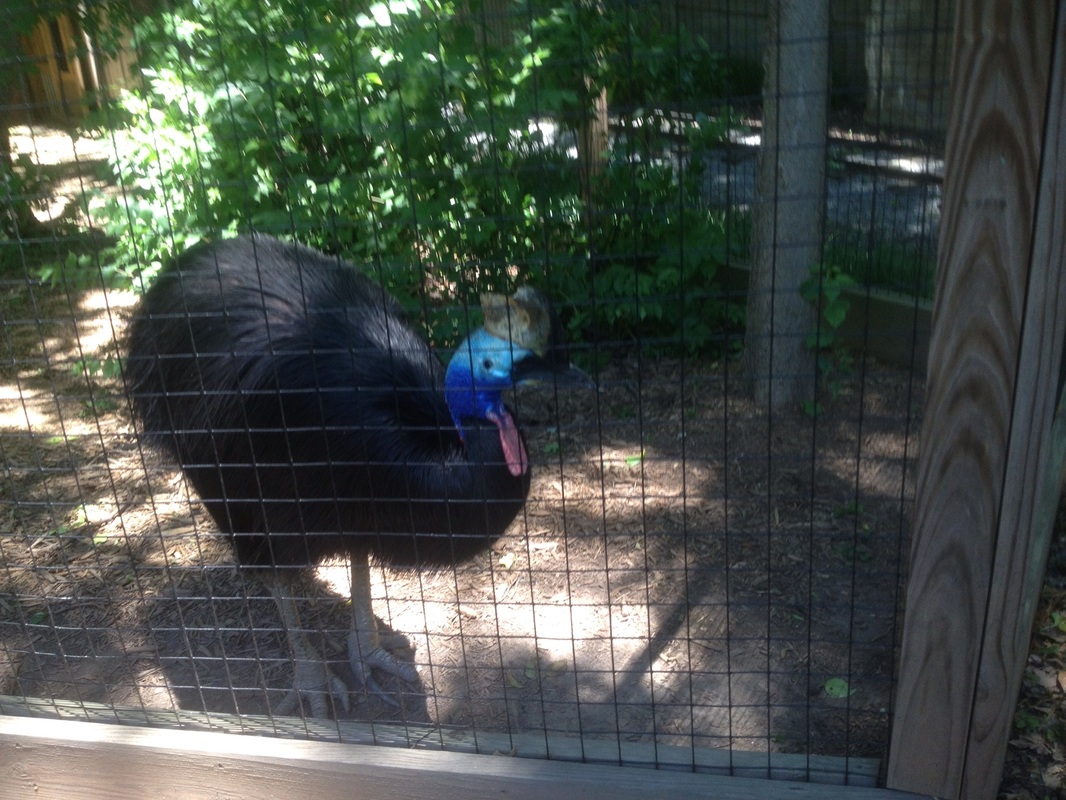Southern Cassowary Casuarius casuarius
|
Range: Australia
Size: ♂: 1.5-1.8m ( 4.9-5.9 ft) ♀: 1.5-1.8 m (4.9-5.9 ft) Weight :♂:29-34 kg ( 64-75 lbs) ♀ :58.5 kg (129 lbs) Wing:N/A Habitat: Rain forest Incubation: 47-61 days Eggs: 3-4 Fledge: n/a Sexual maturity: 2-4 years Nest: leaf mattress Social: Solitary Breeding: polyandrous Movement: Food: Fruit IUCN: least Vulnerable Subspecies: monotypic Longevity: captive:40 yrs Wild: |
Often considered the most dangerous bird in the world the Southern Cassowary is a formidable animal when threatened. Stand in nearly six feet tall and armed with a five inch claw on its middle toe the cassowary protects itself with a powerful kick. A flightless bird it makes it home in the rain forests of northern Australia and New Guinea.
The southern cassowary, also known as the doubled-wattled cassowary is the largest of the three species of cassowary. It is a monotypic species with no subspecies. It is a ratite having no keel on their sternum The population of the species is declining due to habitat loss. It is listed as Vulnerable by the IUCN and is protected by the Australian government. |
Your browser does not support viewing this document. Click here to download the document.

